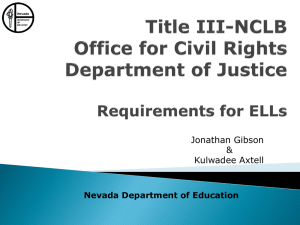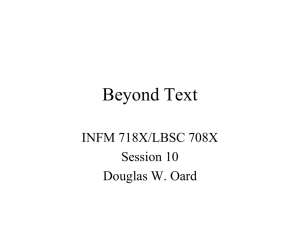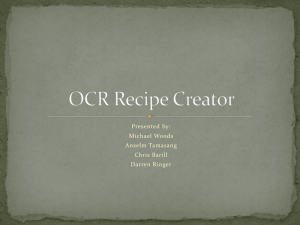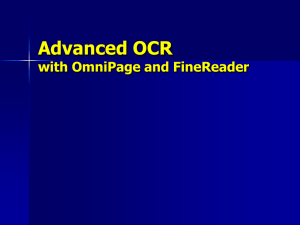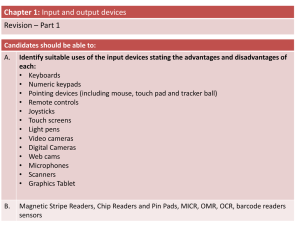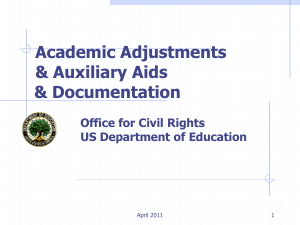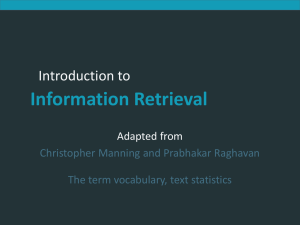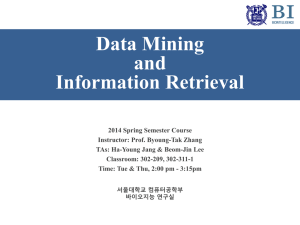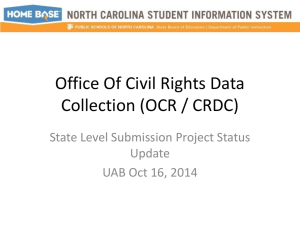Document Image Retrieval
advertisement
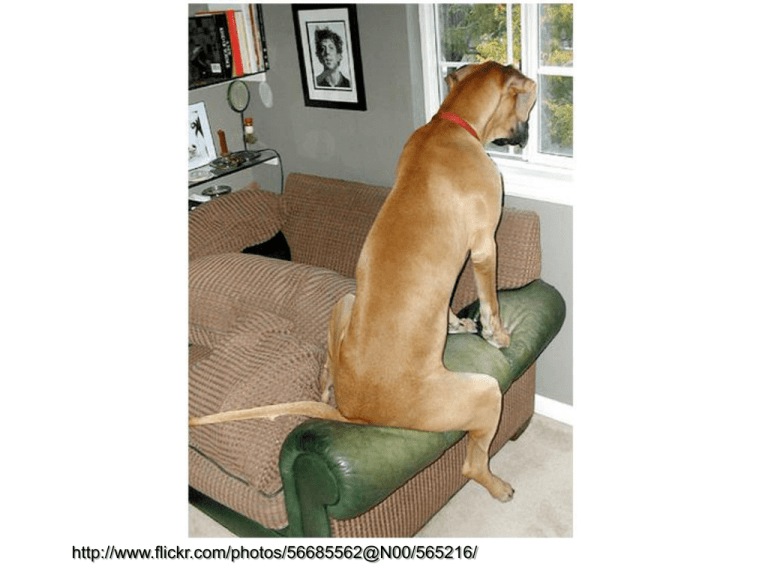
http://www.flickr.com/photos/56685562@N00/565216/
Document Image Retrieval
David Kauchak
cs160
Fall 2009
adapted from:
David Doermann
http://terpconnect.umd.edu/~oard/teaching/796/spring04/slides/11/796s0411.ppt
Assign 4 writeups
• Overall, I was very happy
• See how big a difference the modifications make!
• Some general comments
– explain data set and characteristics
– explain your evaluation measure(s)
– think about the points you’re trying to make, then use the data to
make that point
– comment on anything abnormal or surprising in the data
– dig deeper if you need to
– if you have multiple evaluation measures, use them to
explain/understand different behavior
– try and explain why you got the results you obtained
Information retrieval systems
• Spend 15 minutes playing with three different image
retrieval systems
–
–
–
–
http://en.wikipedia.org/wiki/Image_retrieval has a number
What works well?
What doesn’t work well?
Anything interesting you noticed?
• You won’t hand anything in, but we’ll start class on
Monday with a discussion of the systems
Image Retrieval
http://infolab.stanford.edu/~wangz/project/imsearch/review/JOUR/datta_TR.pdf
Image Retrieval Problems
http://infolab.stanford.edu/~wangz/project/imsearch/review/JOUR/datta_TR.pdf
Different Systems
http://infolab.stanford.edu/~wangz/project/imsearch/review/JOUR/datta_TR.pdf
Information retrieval: data
amount of data
Text retrieval
trillions of web pages
within an order of
magnitude in “private” data
Audio retrieval
order of a few billion?
last fm has 150M songs
Image retrieval
somewhere in between
data characteristics
• user generated
• some semi-structured
• link structure
• mostly professionally
generated
• co-occurrence statistics
• user generated
• becoming more prevelant
• some tagging
• incorporated into web
pages (context)
Information retrieval: challenges
challenges
Text retrieval
• scale
• ambiguity of language
• link structure
• spam
Audio retrieval
Image retrieval
• query language
• user interface
• features/pre-processing
• query language
• user interface
• features/pre-processing
• ambiguity of pictures
other dimensions?
What’s in a document?
• I give you a file I downloaded
• You know it has text in it
• What are the challenges in determining what characters
are in the document?
– File format:
http://www.google.com/help/faq_filetypes.html
What is a document?
Document Images
• A document image is a document that is represented as
an image, rather than some predefined format
• Like normal images, contain pixels
– often binary-valued (black, white)
– But greyscale or color sometimes
• 300 dots per inch (dpi) gives the best results
– But images are quite large (1 MB per page)
– Faxes are normally 72 dpi
• Usually stored in TIFF or PDF format
Want to be able to process them like text files
Sources of document images
• Web
– http://dli.iiit.ac.in/
– Arabic news stories are often GIF images
– Google Books, Project Gutenberg (though these are a bit
different)
• Library archives
• Other
– Tobacco Litigation Documents
• 49 million page images
IMAGE
Document Image
Database
• Collection of scanned images
• Need to be available for indexing and retrieval,
abstracting, routing, editing, dissemination, interpretation
• NOTE: more needs than just searching!
What are the challenges?
What are the sub-problems?
Document images
• So far, we’ve only been interested in documents
as strings of text
• Document images introduce contain additional
information
–
–
–
–
–
embedded images
formatting
handwritten annotations
figures/diagrams/tables
classes of documents
• memo
• newspaper article
• book page
Challenges
• They’re an image
• Quality
– scan orientation
– noise
– contrast
• Hand-written text
• Hand-written diagrams
Sub-problems
• Classification - what type of document image is this?
• Page segmentation
–
–
–
–
–
structure
identify images
identify text
identify handwritten text
diagram identification
• Meta-data identification
– title, author
– language
• OCR
• Reading ordering
• Indexing
Problems we’ll discuss today…
• Preprocessing issues
– Page Layer Segmentation
– OCR
– Reading order
• IR issues
Problem: Page Layer Segmentation
• A document consists of many layers, such as handwriting, machine printed
text, background patterns, tables, figures, noise, etc.
Step 1 - segmentation
Segmentation
Segmentation
Step 2 – classify the segments
Printed text
Handwriting
Noise
We can use features of the “segment” as well as
positional information about the other segments
Segmentation Classification
Before enhancement
After enhancement
Problem: OCR
• One of the more successful applications of computer vision
How does this happen?
OCR: One solution
• Pattern-matching approach
– Standard approach in commercial systems
– Segment individual characters
– Recognize using a neural network classifier
OCR
Ideas?
Optical Character Recognition
• Hidden Markov model approach
– Experimental approach developed at BBN
– Segment into sub-character slices
– Limited lookahead to find best character choice
Determining character
segmentation is difficult!
- Uniform slices
- View as a sequential
prediction problem
OCR Accuracy Problems
• Character segmentation errors
– In English, segmentation often changes “m” to “rn”
• Character confusion
– Characters with similar shapes often confounded
• OCR on copies is much worse than on originals
– Pixel bloom, character splitting, binding bend
• Uncommon fonts can cause problems
– If not used to train a neural network
Improving OCR Accuracy
• Image preprocessing
– Mathematical morphology for bloom and splitting
– Particularly important for degraded images
• “Voting” between several OCR engines helps
– Individual systems depend on specific training data
• Linguistic analysis can correct some errors
– Use confusion statistics, word lists, syntax, …
– But more harmful errors might be introduced
OCR Speed
Challenge with OCR is there is a often a
trade-off between speed and accuracy
• Neural networks take about 10 seconds a page
– Hidden Markov models are slower
• Voting can improve accuracy
– But at a substantial speed penalty
• Easy to speed things up with several machines
– For example, by batch processing - using desktop computers at
night
Problem: Reading Order
What is the sequence of
words from this document?
Ideas?
Logical Page Analysis
• Can be hard to guess in some cases
– Newspaper columns, figure captions, appendices, …
• Sometimes there are explicit guides
– “Continued on page 4” (but page 4 may be big!)
• Structural cues can help
– Column 1 might continue to column 2
• Content analysis is also useful
– Word co-occurrence statistics, syntax analysis
Traditional Approach
Document
Scanner
Page
Image
Page
Decomposition
Structure,
images, etc
Text
Regions
Optical Character
Recognition
Text
Remember our goal
• Create an IR system over image documents
• Challenge: OCR is not perfect
– Success for high quality OCR (Croft et al 1994, Taghva 1994)
– Limited success for poor quality OCR (1996 TREC, UNLV)
Ideas?
Proposed Solutions
• Improve OCR
• Again, speed is always a concern
• Similar to spelling correction
– Automatic Correction
– Characters N-grams
• Statistically robust to small numbers of errors
• Rapid indexing and retrieval
• Works from 70%-85% character accuracy where traditional IR fails
Matching with OCR errors
5
with confidence X%
> 80%
Keep base system answer
75% - 80%
Character n-grams
<75%
More intensive image techniques
(e.g. shape codes)
Conversion to Text?
• Full Conversion often required
• Conversion is difficult!
– Noisy data
– Complex Layouts
– Non-text components
Points to Ponder
Do we really need to convert?
Can we expect to fully describe documents without
assumptions?
Idea: do processing on images
• Characteristics
– Does not require expensive OCR/Conversion
– Applicable to filtering applications
– May be more robust to noise
• Possible Disadvantages
– Application domain may be very limited
– Indexing?
Shape Coding
• Approach
– Use of Generic Character Descriptors
– Map Character based on Shape features including ascenders,
descenders, punctuation and character with holes
Shape Codes
• Group all characters that have similar shapes
–
–
–
–
–
–
{a, c, e, n, o, r, s, u, v, x, z}
{b, d, h, k, }
{f, t}
{g, p, q, y}
{i, j, l, 1, I}
{m, w}
• Shape codes whether a subset of an image belongs to
a given character set
• Sub-process later based on linguistic and/or OCR
Why Use Shape Codes?
• Can recognize shapes faster than characters
– Seconds per page, and very accurate
• Preserves recall, but with lower precision
– Useful as a first pass in any system
• Easily extracted from JPEG-2 images
– Because JPEG-2 uses object-based compression
Evaluation
• The usual approach: Model-based evaluation
– Apply confusion statistics to an existing collection
• A bit better: Print-scan evaluation
– Scanning is slow, but availability is no problem
• Best: Scan-only evaluation
– Few existing IR collections have printed materials
Summary
• Many applications benefit from image based indexing
–
–
–
–
Less discriminatory features
Features may therefore be easier to compute
More robust to noise
Often computationally more efficient
• Many classical IR techniques have application for DIR
• Structure as well as content are important for indexing
• Preservation of structure is essential for in-depth
understanding
Closing thoughts….
• What else is useful?
– Document Metadata? – Logos? Signatures?
• Where is research heading?
– Cameras to capture Documents?
• What massive collections are out there?
– Google Books
– Other Digital Libraries
Additional Reading
• A. Balasubramanian, et al. Retrieval from Document
Image Collections, Document Analysis Systems VII,
pages 1-12, 2006.
• D. Doermann. The Indexing and Retrieval of Document
Images: A Survey. Computer Vision and Image
Understanding, 70(3), pages 287-298, 1998.
Fun Stuff
•
http://www.sr.se/P1/src/sing/#
